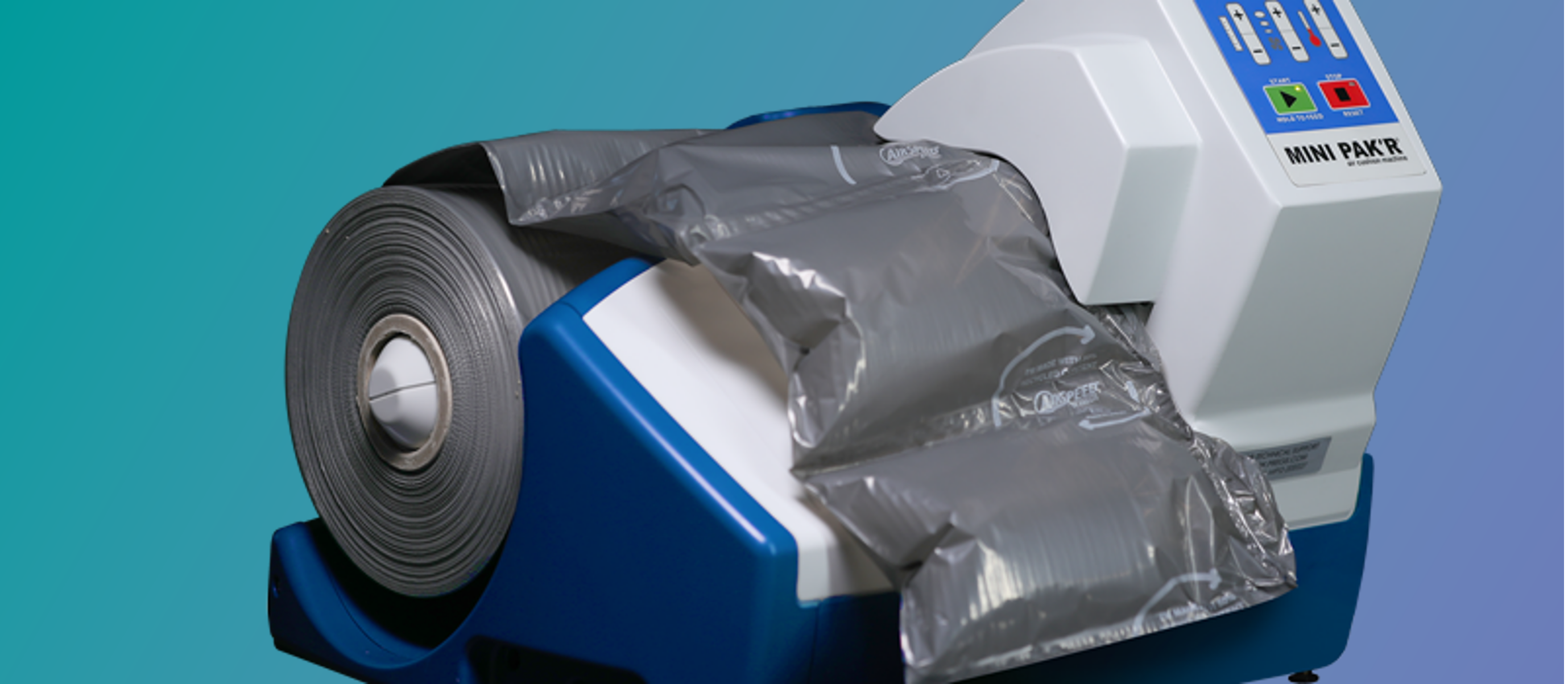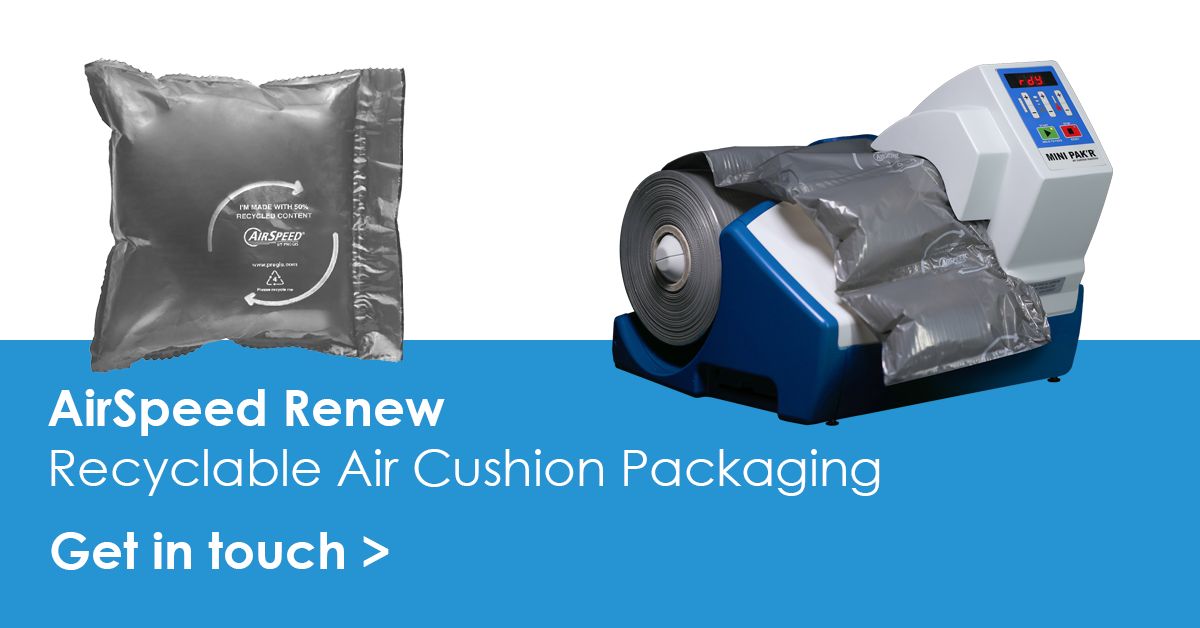How to make your air cushion packaging more environmentally friendly

Air cushions, air bags or air pillows, may already be more environmentally friendly than you thought.
Using the power of air to hold your products in place and absorb shock, they use a fraction of the packaging material a paper alternative requires. They are literally as light as air, reducing your overall parcel weight too.
Many businesses are conscious of the impact on their packaging choices, both to their customers and on the environment. No consumer wants their bin filled with unnecessary mounds of packaging, which is where air cushioning plays to its strengths.
As each pillow is filled with air, the ratio of material make-up of an inflated cushion can be as low as 1% material and 99% air.
However, there are ways to make your packaging choice more environmentally friendly.
Review the material used
Air based packaging is typically made from either HDPE or LDPE plastic. This is largely due to the fact that it is nonporous and traps the air to hold it in place. Both materials can be recycled but not all local authorities are able to process them, therefore it is advised to “check locally” for recycling purposes.
Other air bag materials are available. For example, paper, which uses a plastic or starch-based liner to stop the air from escaping, or biomaterial products such as potato starch. There are also options that are biodegradable or compostable, which must meet the specific requirements set out in The European Standard EN 13432.
Switch to recycled content material
It takes more energy to manufacture virgin plastic material than recycled plastic. Consider switching to more environmentally friendly air cushions. The AirSpeed Renew Airbag uses 50% recycled content material. It is also 100% recyclable. This small change will help you to reduce the carbon footprint of your packaging.
If the recycled content makes up 30% or more of the total material, it also puts you in line with the proposed UK plastic packaging tax due to come into force in April 2022.

Switch to a thinner material
By switching to a lower micron air cushioning solution, you could effectively remove tonnes of material from your packing operation. For example, Fill-Air Extreme® E film produces a lightweight air bag that performs just as well as higher microns but uses much less material. As the material is thinner, it also means each roll can hold up to 2,408 metres per roll. This gives you more air cushioning material on a single pallet, reducing your goods-in deliveries as well as the storage space required onsite. It also means fewer roll changes at the packing station, helping your packers to work smarter and improve productivity.
If you would like advice to find the right air cushioning solution for your business, why not contact Macfarlane Packaging today.
Read next…
Understanding the UK Proposed Packaging Tax >

